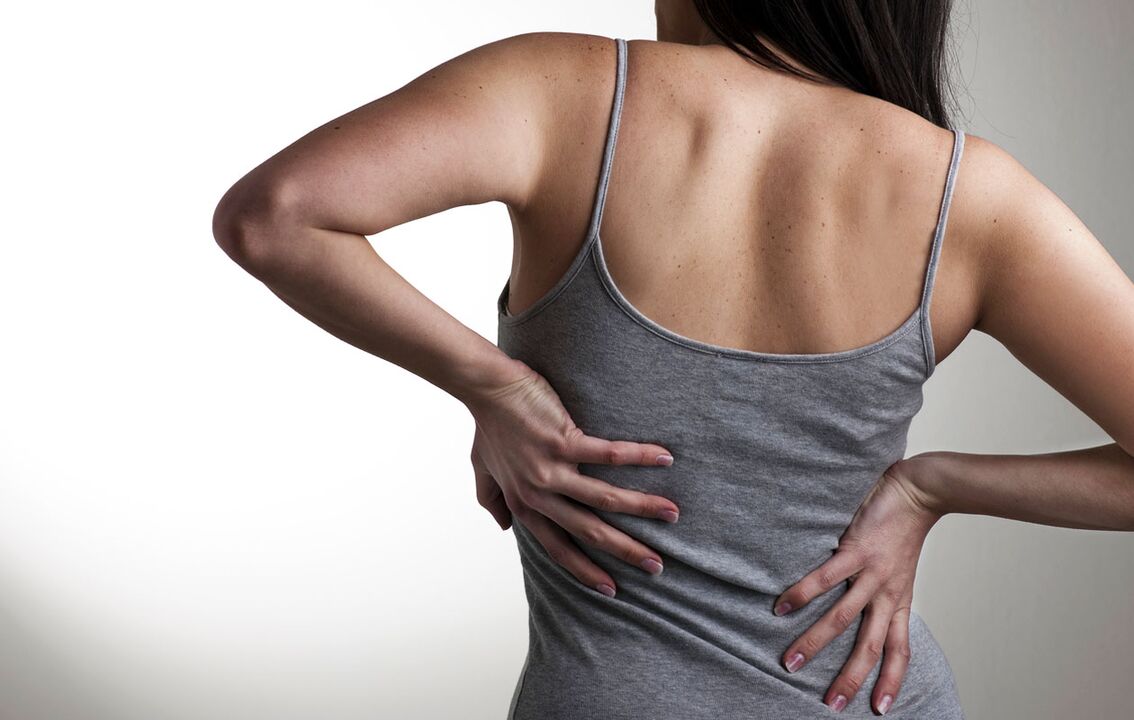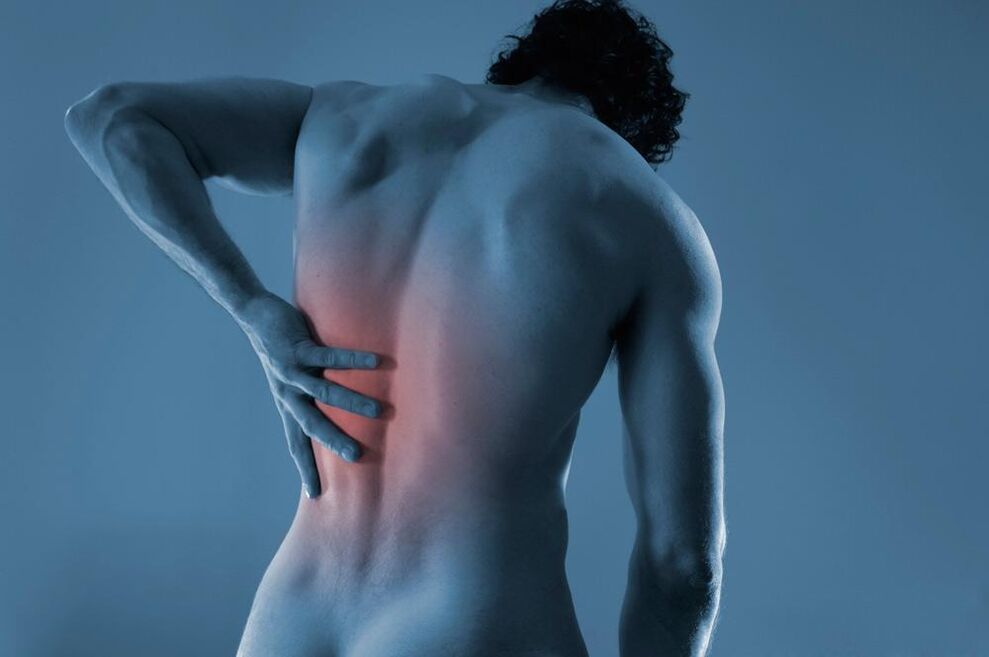Osteochondrosis of the thoracic region is rare; symptoms of damage to the cervical and lumbar region are more common. Chest osteochondrosis poses a threat to human health. Due to the peculiarities of the structure of the chest, given the symptoms of osteochondrosis of the chest, the diagnosis is problematic, as a result, patients learn about the disease in the final stages.
The chest does not move, like other parts of the spine. The sternum is not under constant pressure. Factors explain that the disease at an early stage has no significant symptoms. The chest has a complex structure, the immobility of the thoracic region is associated with the structure of the spine. The combination of spine and ribs provides a reliable durable structure that is resistant to injury.

Chest osteochondrosis develops with slight displacement of the vertebrae, which occurs under the influence of pressure. Osteochondrosis will not keep you waiting if someone has postural curvature, spine. The development of osteochondrosis is not so marked as in other parts of the spine, until it reaches a difficult stage, the symptoms appear, similar to the manifestations of the disease in the neck, lower back.
The cause of the pain
Painful sensations do not arise for no reason. Pain syndrome is an obvious symptom of the disease. When osteochondrosis develops, the chest aches. Manifestations of pain appear when a person experiences a deformity of the intervertebral disc. This means thinning, protrusion, formation of intervertebral hernias. Pain is unavoidable when joint changes occur. We are talking about the formation of osteophytes, the destruction of cartilage tissue.
Late visits to the doctor, refusal to go to the hospital, lack of treatment, improper implementation, threaten a person with radiculopathy. The medical term refers to the compression of nerve roots located in the spinal cord. Spinal cord compression should be associated. The possibility of spinal cord injury is not excluded.
Pain syndrome
No matter how difficult it is to diagnose the disease, the disease will begin to manifest itself. In the first stage of the development of osteochondrosis, it is difficult to identify symptoms; on a difficult level, they do not hide its presence. The symptoms of thoracic osteochondrosis are conventionally divided into two groups. The first is pain, the second is a neurological manifestation.
Pain syndrome manifests itself in two forms: dorsago, dorsalgia. Often the pain is localized in the upper back, hidden between the ribs. It often occurs when, with body movements, turns, the appearance of coughing, deep breathing, a person experiences severe girdle pain located between the ribs.
An attack of thoracic osteochondrosis is confused with heart disease. The fault is the many autonomic nerve fibers located in the thoracic region. Thanks to them, the manifestations of osteochondrosis are similar to the symptoms of heart disease: pain in the left side of the sternum, the development of inflammatory processes in the gallbladder. It is possible that simulators of stomach diseases appear - symptoms similar to ulcers, gastritis.
Neurological symptoms

Thoracic osteochondrosis has a group of neurological symptoms:
- Numbness, flattening the bottom of the foot;
- Chest numbness;
- Numbness in the abdomen, pelvis;
- Reflex tension of the muscular corset in the back, chest;
- Potential violations;
- Disorders of the genitals, pelvic organs.
Complications of thoracic osteochondrosis are not excluded, one of which is considered herpes zoster. It is important to identify the disease at an early stage of development. The symptomatology of the disease is broad, not special in nature, there is a high risk of incorrectly identifying the disease.
Signs
The disease has symptoms. Among the signs, the appearance of numbness in the body part is observed.
The person begins to experience tingling (appearance of goose bumps). With thoracic osteochondrosis, a sharp local temperature drop in the lower leg is possible. Osteochondrosis is often accompanied by irritation, a burning sensation, and itching.
Osteochondrosis is characterized by increased fragility of the nail. The appearance of unhealthy skin conditions, flaking, especially on the face, is possible. Symptoms are associated with vascular dysfunction. Another sign is a failure in the gastrointestinal tract system, as a result of which a person suffering from osteochondrosis often suffers from digestive disorders, bloating.
Dorsago
The diagnosis of thoracic osteochondrosis begins with the identification of the main symptoms of the disease - vertebral syndrome: dorsago, dorsalgia.
Dorsago is a sudden acute pain that manifests itself in the sternum area. Often this syndrome affects people who lead an inactive lifestyle, whose profession involves being at work for 8 hours a day, sitting in front of a computer. It should be associated with drivers who rarely leave a place near the steering wheel of a car.
Dorsago is called "chest lumbago", because it hard, suddenly strikes the area between the shoulder blades, as if a knife is being stuck. The onset of the syndrome is often accompanied by shortness of breath. Dorsago is confused with myocardial infarction. Treatment of the disease should be started earlier, otherwise it is not difficult to confuse the disease. Improper treatment will result in complex consequences of thoracic osteochondrosis.
Dorsalgia
Dorsalgia syndrome manifests itself at a slower rate, tormenting the patient for 3 weeks. It is very easy to identify this syndrome, it consists of a faint sensation of pain in the inflamed area. Manifestations give a person a feeling of discomfort, which prompts to go to the hospital for help. With dorsalgia, the following are possible:
- Increased intensity of pain with deep breathing, coughing;
- Muscle tension;
- Decreased motor activity in the neck, lower back;
- The appearance of muscle spasms;
- Increased pain intensity at night, with physical activity.
There are two types of dorsalgia - upper, lower. With the upper part, the main area of the lesion is in the upper part of the sternum (in the neck area), for the second option, pain in the lumbar and sacral areas is characteristic.
It is important not to confuse the manifestations of dorsalgia with the onset of pneumonia; similar manifestations, improper treatment will exacerbate the situation. Osteochondrosis during lactation is manifested through such symptoms, treatment should be made carefully, under the supervision of a physician. Taking medications is selected based on what is acceptable, unacceptable to risk your health, the health of the child.





































